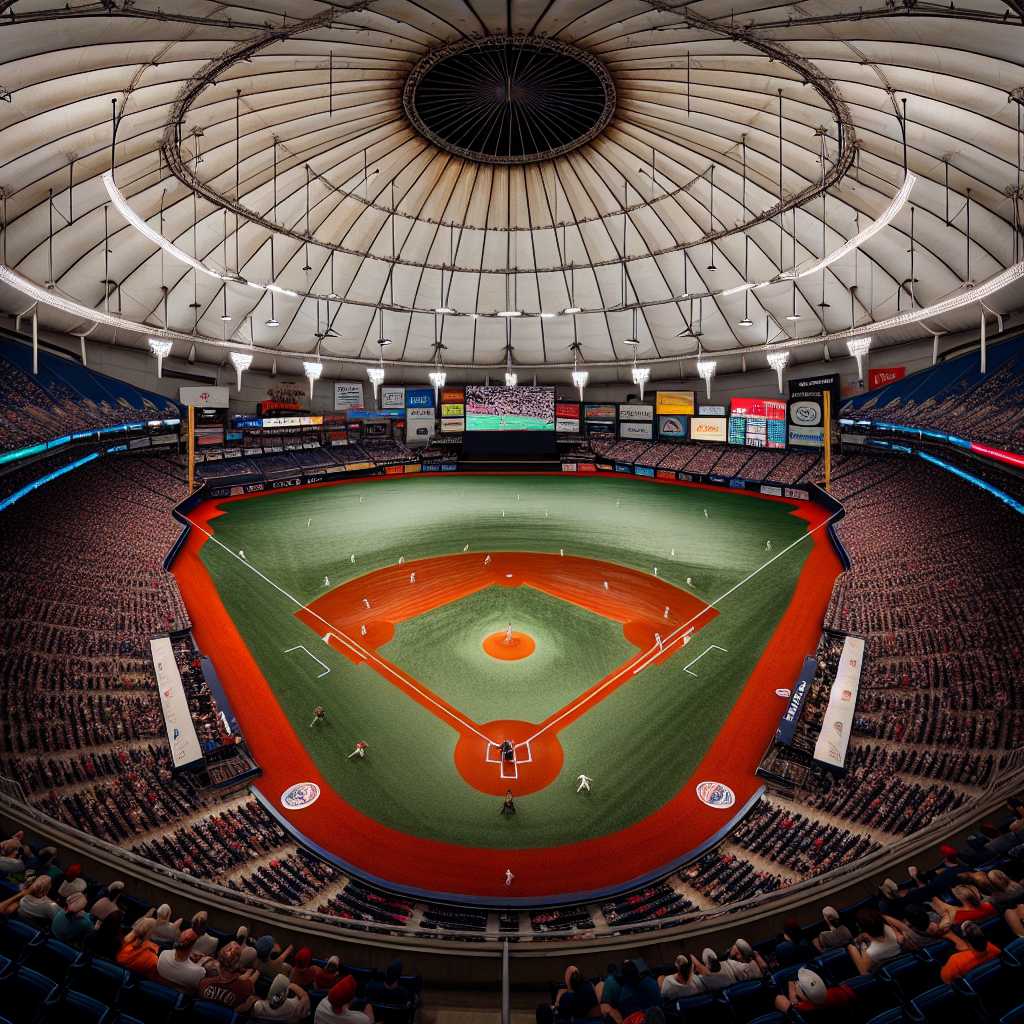Exploring Tropicana Field: Home of the Tampa Bay Rays
Tropicana Field stands as a unique fixture in the world of Major League Baseball (MLB), being the only remaining fixed-dome stadium in the league. It is situated in St. Petersburg, Florida, and serves as the home ground for the Tampa Bay Rays. Over the years, Tropicana Field has been under scrutiny for its design and location, unlike many other stadiums which offer retractable roofs or natural grass playing surfaces. This article delves deep into the history of Tropicana Field, its architectural specifics, the fan experience it offers, and its place in the broader context of MLB.
The History of Tropicana Field
Tropicana Field, also known colloquially as “The Trop,” was conceived as a catalyst to lure a Major League Baseball franchise to the Tampa Bay area. Construction on the domed stadium began in 1986 and it was completed in 1990, originally named the Florida Suncoast Dome. The stadium didn’t secure an MLB team until 1995 when it was renamed the Thunderdome and became the home of the Tampa Bay Lightning (NHL) and the Tampa Bay Storm (Arena Football League).
In 1996, St. Petersburg’s persistence finally paid off when MLB announced that it would establish the Tampa Bay Devil Rays as an expansion team starting play in the 1998 season. With a permanent tenant secured, significant renovations were undertaken including the addition of a baseball-specific turf playing surface, improved seating configurations tailored for baseball sightlines, and amenities for baseball fans.
Architectural Features and Innovations
Aside from its notable history, Tropicana Field includes several unusual features that set it apart from other stadiums. One such feature is its slanted roof, designed at a gradient to reduce cooling costs and defray maintenance needs common to flat indoor arenas. Also peculiar to “The Trop” are its four catwalks hanging from the ceiling, which can impact play by altering batted balls—a rarely-seen quirk in modern baseball.
The field itself is known for using an artificial turf instead of natural grass, somewhat out of step with current ballpark trends favoring natural surfaces for aesthetic and player performance reasons. Moreover, Tropicana Field integrated modern tech solutions like LED lighting and high-definition scoreboards to enhance the spectator experience.
The Fan Experience at “The Trop”
Going to a game at Tropicana Field can be described as both a unique and controversial fan experience in professional sports. The preserved temperature via climate control defies Florida’s outside heat, which is inviting for attendees. On top of this conditioned environment, there are family-friendly areas such as the Rays Touch Tank, which houses real rays that fans can touch and interact with during games.
Despite these features, fan turnout has been a frequent topic within media discussions given that “The Trop” often ranks low in attendance compared to other league venues. Critics argue that this stems from various factors such as its location, considered less accessible in comparison to downtown venues in larger metropolitan cities.
Ongoing Debates and Proposed Future Developments
Current conversations surrounding Tropicana Field are headlined by talks of renovations or even the potential construction of a new stadium altogether. Some propose state-of-the-art upgrades that would redraw the contentment lines between devoted fans craving modernity and those attached to “The Trop’s” historical roots.
MLB has been somewhat vocal about its desire for the Rays to move forward with either improving existing facilities or building new ones capable of steering more consistent attendance figures with up-to-date amenities adherent to modern standards expectant of professional sporting venues.
